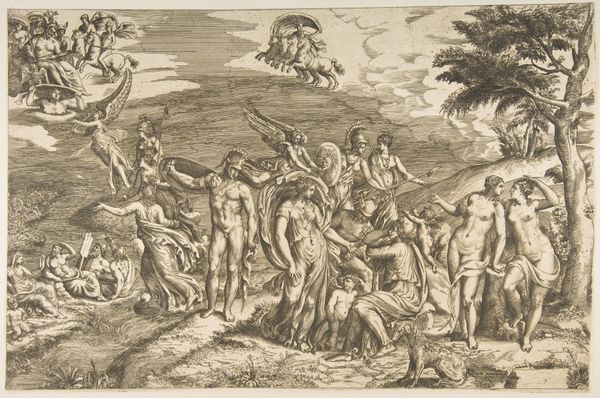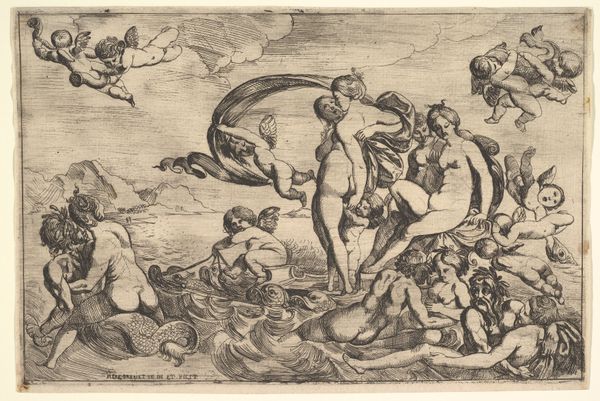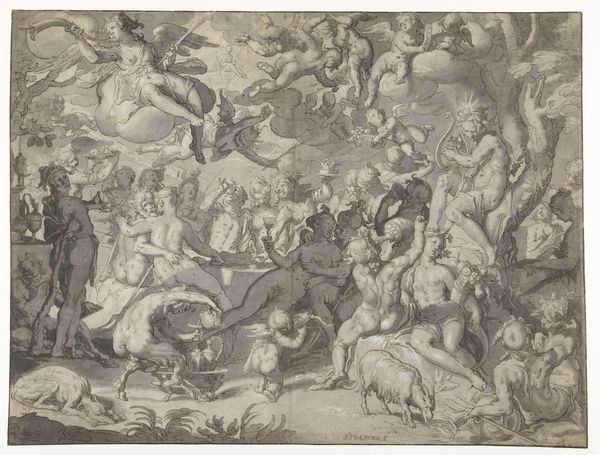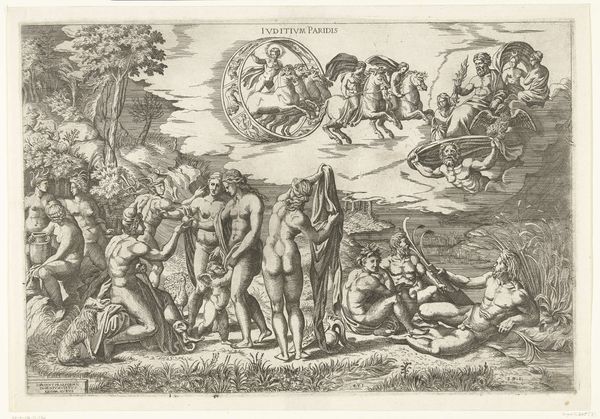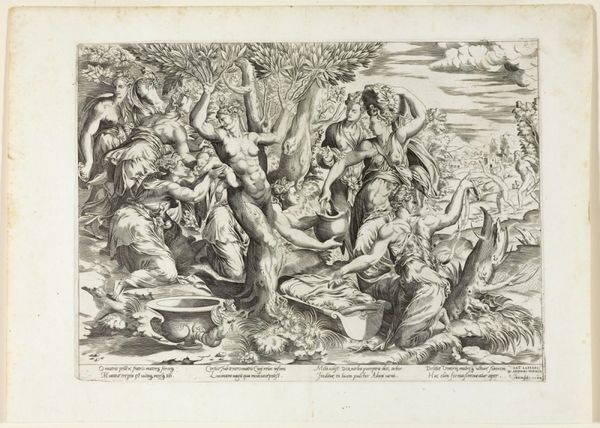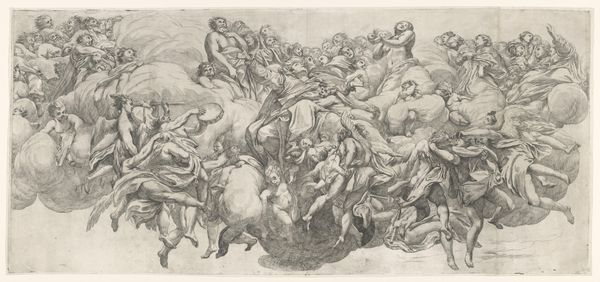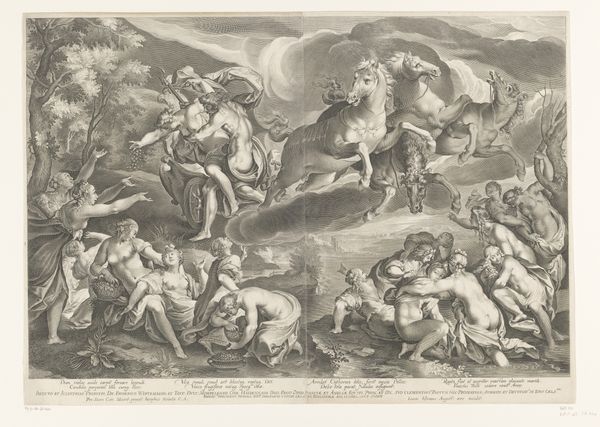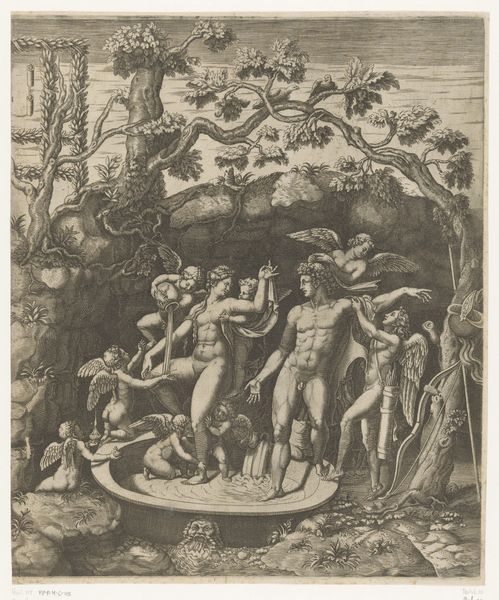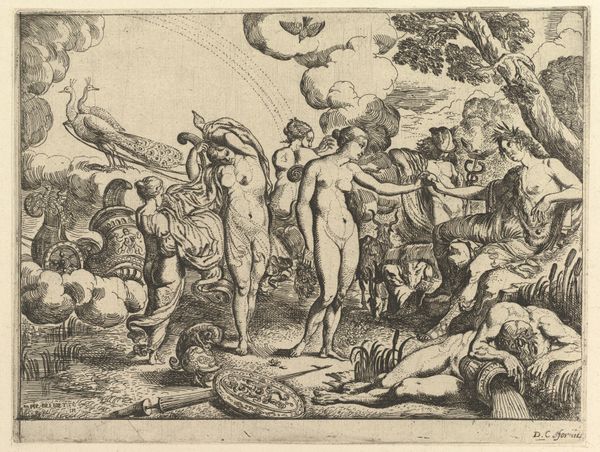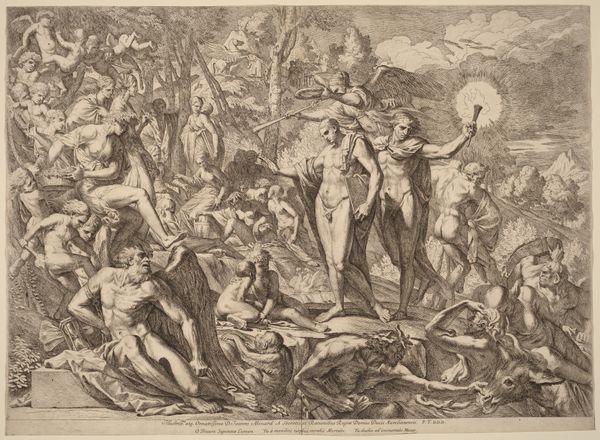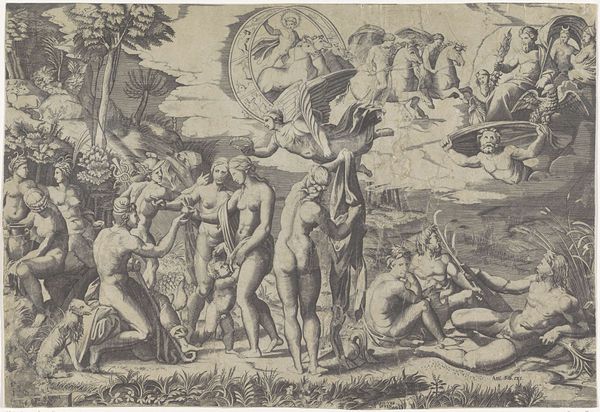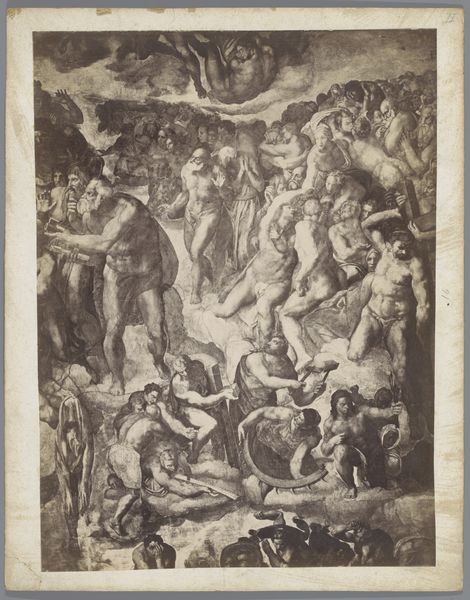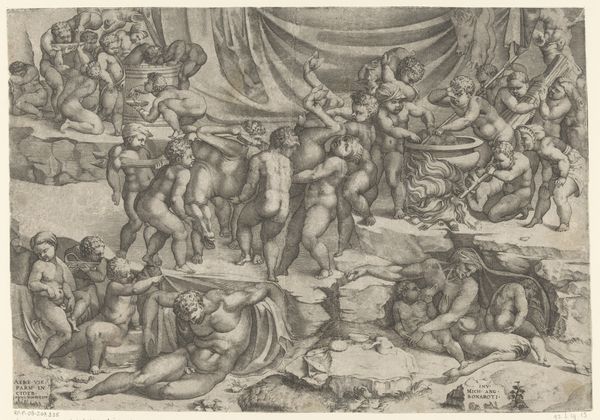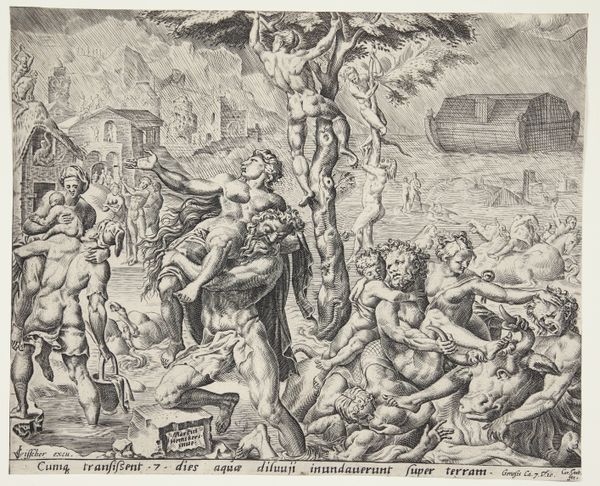
The triumph of love, cupid riding a chariot drawn by unicorn is in the upper right, naked figures fill the composition; a proof impression 1545
0:00
0:00
drawing, print, etching
#
portrait
#
drawing
#
ink drawing
#
allegory
# print
#
etching
#
mannerism
#
figuration
#
cupid
#
line
#
history-painting
#
italian-renaissance
#
nude
#
male-nude
Dimensions: sheet: 10 1/4 x 15 7/8 in. (26 x 40.4 cm)
Copyright: Public Domain
Curator: Welcome. Today, we’re examining "The Triumph of Love," an etching and engraving by Giulio Bonasone, dating back to 1545. It’s currently held at the Metropolitan Museum of Art. Editor: It’s intensely crowded, isn't it? All those figures, a swarm of naked bodies… It feels rather dreamlike, or perhaps even nightmarish, with the sharp lines and almost frenzied energy. Curator: Dreamlike is a good word for it. Bonasone was deeply influenced by Mannerism, so the composition is purposefully complex, theatrical. Think about the court culture of the time, where such displays of erudition and complicated allegories were highly valued. It shows Cupid at the top, commanding the earthly realm. Editor: It strikes me that a lot of labor clearly went into the engraving. Notice the cross-hatching—the time, effort, and skill required to create that level of detail. These lines dictate the value which dictate the form. Curator: Absolutely. Etchings like this one weren't just standalone works. They circulated ideas. This print after a design by the renowned painter Perino del Vaga, made that artists conceptions accessible to collectors who might never afford a painting. Editor: The lines themselves seem to possess their own energy. It's not just about what’s depicted but how it’s rendered. This almost obsessive quality mirrors that kind of frenzy that romantic obsession and the desire, with the materiality underscoring it all. Did this circulation and proliferation of printed images change artists conception of production? Curator: Indeed. The accessibility of prints significantly expanded art’s audience. Collecting prints became fashionable. It altered not only production practices, with artists having to be aware of distribution channels, but also reception because it moved images out of palaces and churches into homes and albums. Editor: It almost anticipates the modern age. Where does Bonasone source materials from? I feel like if we look to the commercial landscape in Florence, we could start to examine Bonasone's participation. Curator: Yes, the rise of the print market certainly contributed to that. We see it influencing artists' choices of subject matter and style to appeal to a wider audience. Bonasone, like many others, capitalized on that new artistic and commercial landscape. Editor: That new landscape created some interesting possibilities, and some interesting pitfalls, which I find intriguing in this image. Thank you for offering a way to interpret it through this lens. Curator: And thank you for that interesting look at materiality. It highlights something easily overlooked: the hand of the artist in what might appear simply as a reproductive medium.
Comments
No comments
Be the first to comment and join the conversation on the ultimate creative platform.
